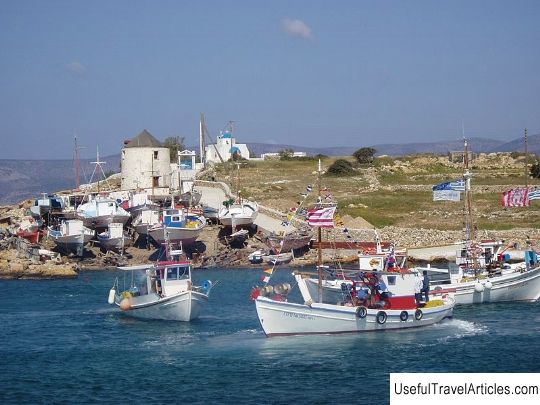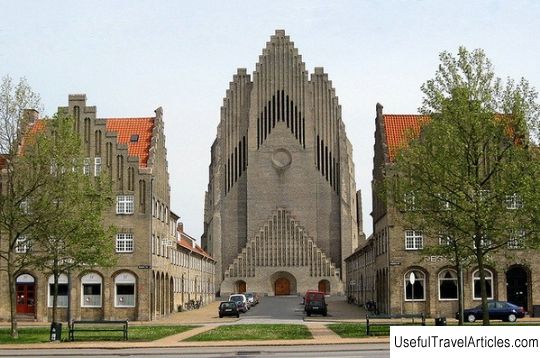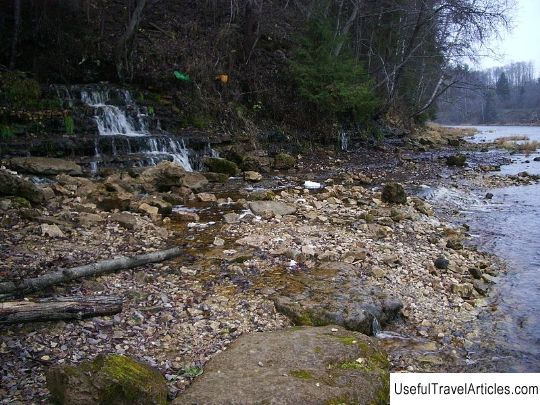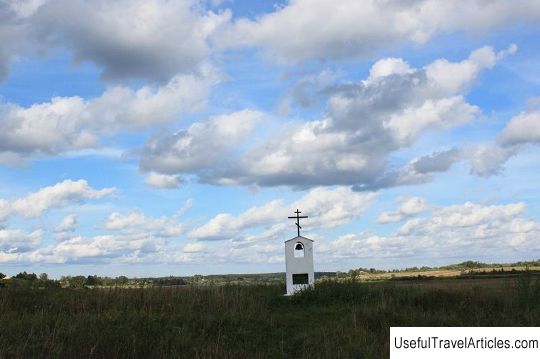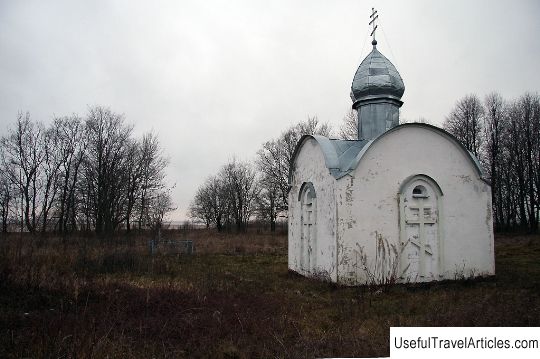Ilmensky glint description and photo - Russia - North-West: Novgorod region
Rating: 8,0/10 (240 votes) 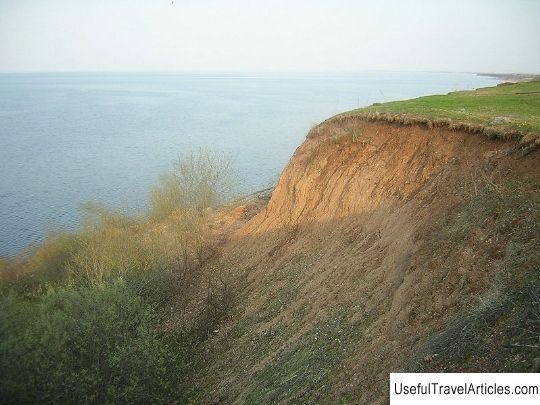
Ilmensky glint description and photos - Russia - North-West: Novgorod region. Detailed information about the attraction. Description, photos and a map showing the nearest significant objects. Photo and descriptionIlmensky klint is a natural formation, a geological monument located in the Shimsky and Starorussky districts of the Novgorod region, in the western region of the southern shore of Lake Ilmen, between the delta of the Shelon and Lovat rivers. Ilmensky klint is a high, bare cliff-ledge. Its length is 8 km, the highest point - about 15 meters - is located between the villages of Korostyn and Pustosh. Further, the klint spreads to the east, gradually decreasing and, as a result, ends. Through it, in the area of the village of Ustreka, the Psizha River and the Savateika stream flow, flowing into Lake Ilmen. Ilmensky Klint is the longest outcrop of the marine Devonian on the Russian Plain and is a unique geological museum. The weather conditions, together with the surf wave, gradually remove the rocks lying in layers: in the west, these are clays, sands appear above them, and then limestones. The faults in the limestone wall were formed by the action of the Quaternary glacier, which moved large stones of crystalline rocks here. On the southwestern coast, strata are exposed, the lower zone of which is represented by the so-called Ilmenian layers. Their thickness in some places is 10-15 m. Here you can see thin-layered clay, bluish-green with red, and white sand with the remains of ancient fauna and flora. The sands contain the remains of shells and bones of ancient fish, as well as the shells of chara algae. The clays are widely represented by representatives of the deep marine fauna. This geological formation at one time attracted the attention of many scientists and researchers. So, for example, Academician I.G. Lehman (1719-1767) was the first to explore the Ilmensky glint. In 1779, Academician E. Laxman analyzed the known data and concluded that in ancient times this place could have been part of a sea bay or lake. In the 19th century, the scientist V.M. Severin created a detailed description of the southwestern shore of Lake Ilmen. Also, this area was studied by academician N. Ya. Ozeretskovsky. His research in 1805 was reflected in the scientific and local history work "The Journey of Academician N. Ozeretskovsky along the lakes of Ladoga, Onega and around Ilmen". In the 1840s, Ilmensky glint was studied by lieutenant colonel, mountain officer (later - academician) G.P. Gelmersen. He identified the formations of the Ilmenskiy Klint as Devonian deposits. In 1849, the Scotsman R.I. Murchinson, who was a member of the St. Petersburg Academy of Sciences, compiled a description and key to a large number of fossils found in the Ilmen limestones. In 1962, by decision of the visiting session of the Soviet Academy of Sciences Union, Ilmensky Glint was declared a natural monument, which is subject to protection by the state. Therefore, any activity that can destroy or change the formed landscape in a given area is prohibited. However, in the second half of the 20th century, limestone was quarried in the channel of the Psizha River, which was then used for the construction of village roads. This caused irreparable damage to the geological monument. All land surveying, agricultural and construction work is also prohibited on this territory. In addition to state protection, the Ilmensky Glint is under the supervision of ecologists from Veliky Novgorod. Since 2001, it belongs to the Specially Protected Natural Area. In addition to the value of the geological formation itself, it contains rare and protected plant species (for example, orchids). There is also an outlet to the surface of mineral and fresh springs.      We also recommend reading Zverin-Pokrovsky Monastery description and photos - Russia - North-West: Veliky Novgorod Topic: Ilmensky glint description and photo - Russia - North-West: Novgorod region. |
